#1100s
Text

Jug, late 1100s-1250, Iraq.
252 notes
·
View notes
Photo
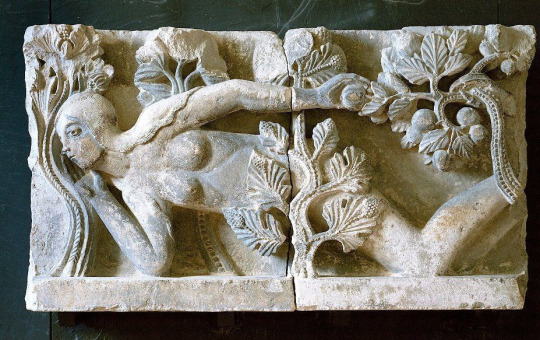
The Temptation of Eve, a bas-relief sculpture from the Cathedral of Saint Lazarus of Autun, France. c. 1130s.
#there is an accompanying adam relief but its not about him.#upload#relief sculpture#1100s#medieval#medieval art#france#art history#mortimer's favorite art
625 notes
·
View notes
Text

A c.1100 knitted cotton Egyptian sock featuring colorwork Arabic writing.
161 notes
·
View notes
Text


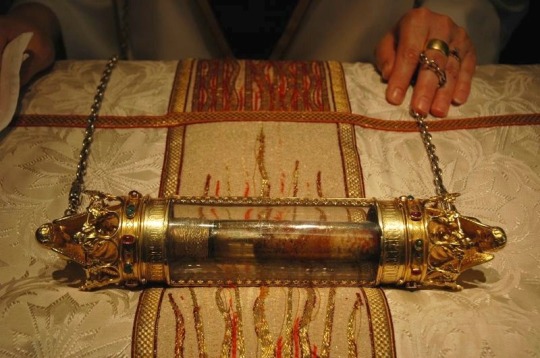
Basilica of the Holy Blood
102 notes
·
View notes
Text

#eleanor of aquitaine#queen of france#queen of england#art#painting#1900s#1100s#queen#royal#edmund blair leighton
63 notes
·
View notes
Text

Ch.1100
14 notes
·
View notes
Text

Winter dusk in Durro, village in the Boí Valley (Vall de Boí) in the High Pyrenees, Catalonia. This valley is known for its Medieval Romanesque churches, such as the bell tower you can see in this photo. It was built in the 12th century.
Photo by joan_gomez_lopez on Instagram.
#durro#vall de boí#catalunya#fotografia#travel photography#travel#medieval#middle ages#romanesque#12th century#1100s#snow#winter#landscape#landscape photography#mountains#pyrenees#beautiful places#catalonia#europe
57 notes
·
View notes
Text
Black project: 1950 Fiat 1100S by Pininfarina
We all know how challenging it is to find a Fiat in the USA dating back to pre-1960s, let alone a model like this that is already rare in Europe.
Every time we come across a car like this, we wonder about its history and the journey that brought it across the ocean because, although it’s a beautiful car, 40 or more years ago, it wasn’t considered a prestigious vehicle like a Ferrari or a…

View On WordPress
15 notes
·
View notes
Text

Castle Combe; often named as the ‘Prettiest Village in England.'
Castle Combe, a medieval village and civil parish within Cotswolds area of outstanding natural beauty in Wiltshire, England.
The village has a rich history and the houses are made up of the honey coloured Cotswold stone, typical for a village of this area.
The village takes its name from a castle built on the hill to the north of the village in the 12th century AD, of which little now remains except earthworks.
No new homes have been built in the historic area since 1600s AD.
During the Middle Ages, the village, along with much of the Cotswolds, enjoyed prosperity due to the growth of a thriving wool industry.
Within Castle Combe, you’ll find a Market Cross and St Andrew’s Church, which dates from the 13th century AD.
The church houses a faceless clock, which is reputed to be one of oldest working clocks in the country.
Numerous weavers’ cottages were erected from local stone, and these ancient honey-hued buildings remain one of the village’s standout features today.
The village was known in particular for manufacturing a red and white cloth known as ‘Castlecombe,’ which was renowned in the markets of Bristol, Cirencester, as well as London and abroad.
In 1440 AD, King Henry VI granted Castle Combe the right to hold a weekly market, with unmistakable Market Cross monument still standing proudly today.
Castle Combe strictly banned all modern attachments such as TV dishes and external wires to the exterior of its houses, restrictions that have been instrumental in helping the historic village to maintain its authentic appearance.
As a result, the village has become a popular location for film crews, with productions including the 1967 filmed musical Doctor Dolittle, Stardust, and The Wolf Man were all shot within the village.
Castle Combe was a key filming location for Stephen Spielberg’s War Horse.
To recreate a 1914 setting, the village’s tarmac through-road was closed and covered with a temporary muddy surface.
Its modern street lamps, signage, and post boxes were either covered or removed altogether. Its white window frames were repainted with more muted colours.
📷 : Credit to the Owner
#Castle Combe#Cotswolds#Wiltshire#England#medieval village#Middle Ages#Market Cross#St Andrew’s Church#Castlecombe#King Henry VI#filming location#weekly market#market town#12th century#1100s#medieval history#medieval architecture#stone buildings#English village
4 notes
·
View notes
Photo
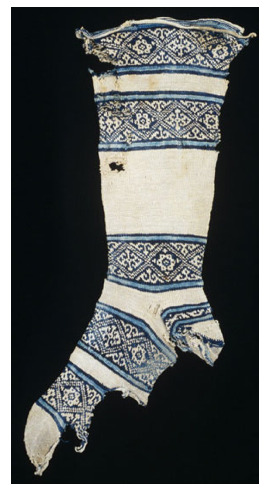
“12th century sock possibly found in Fustat, Egypt The knitter of this sock started work at the toe and then worked up towards the leg. The heel was made last and then attached to loops formed while knitting the leg. This ingenious practice allowed the heel to be replaced when it wore out without the necessity of making new socks. Although this object was found in Egypt, the knitting technique was not common to the area. Egyptians at this time used a simpler method that started at the top of the leg and worked down towards the toe. The sock is thought to have been made in India because it was found with other materials exported from India and sold in the Egyptian market.”
(via File:Islamic sock.jpg - Wikipedia)
7 notes
·
View notes
Text
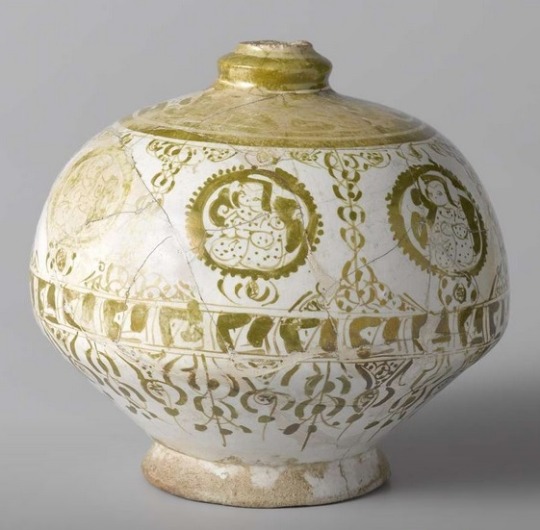
Vessel, 1170-1200, Kashan.
165 notes
·
View notes
Text

Excalibur (1981). Merlin the magician helps Arthur Pendragon unite the Britons around the Round Table of Camelot, even as dark forces conspire to tear it apart.
Oh man, where do you even start with this one? A messy, horny epic, and I mostly mean that as a compliment. The cast is absolutely insane - Patrick Stewart! Gabriel Byrne! Liam Neeson! But none of them can beat out Helen Mirren, who's at her scene-chewing best as Morgan Le Fay. She carries the movie in both it's schlockiest moments and it's most emotionally resonant ones, and that pretty much encapsulates why this movie works. It's A Lot, but sometimes A Lot is pretty great, even when it's not. 7/10.
#excalibur#1981#Oscars 54#Nom: Cinematography#john boorman#thomas malory#rospo pallenberg#nigel terry#helen mirren#nicholas clay#cherie lunghi#gabriel byrne#liam neeson#patrick stewart#ciaran hinds#1100s#england#english#myth#monarchy#fantasy#7/10
21 notes
·
View notes
Text
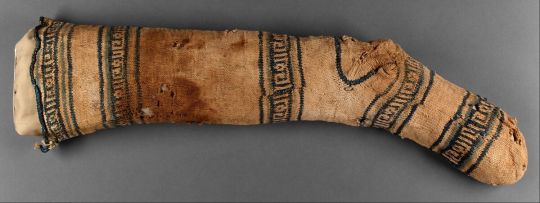

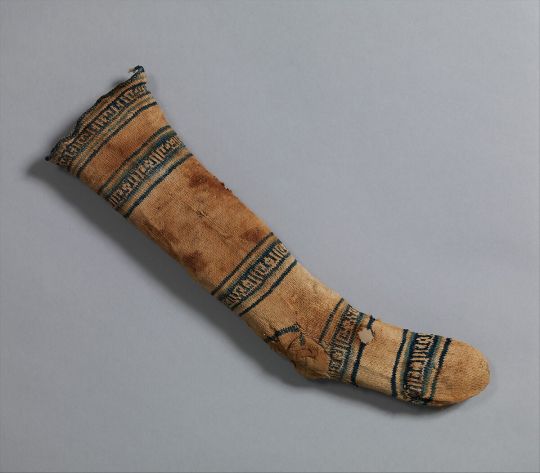
A c.1100-1200 Egyptian cotton sock, currently held at the Metropolitan Museum of Art.
116 notes
·
View notes
Text
Was gonna add Malik but I originally posted this somewhere where a lot of people are homophobic and I was scared of getting doxxed 😰
#altair ibn la'ahad#altair#assassins creed#assassin's creed#maria thorpe#how do i use tumblr#1100s#1200s
47 notes
·
View notes
Link
2020 paper by Alexander G. Ioannidis and 30 other authors for Nature:
The possibility of voyaging contact between prehistoric Polynesian and Native American populations has long intrigued researchers. Proponents have pointed to the existence of New World crops, such as the sweet potato and bottle gourd, in the Polynesian archaeological record, but nowhere else outside the pre-Columbian Americas, while critics have argued that these botanical dispersals need not have been human mediated. The Norwegian explorer Thor Heyerdahl controversially suggested that prehistoric South American populations had an important role in the settlement of east Polynesia and particularly of Easter Island (Rapa Nui). Several limited molecular genetic studies have reached opposing conclusions, and the possibility continues to be as hotly contested today as it was when first suggested. Here we analyse genome-wide variation in individuals from islands across Polynesia for signs of Native American admixture, analysing 807 individuals from 17 island populations and 15 Pacific coast Native American groups. We find conclusive evidence for prehistoric contact of Polynesian individuals with Native American individuals (around AD 1200) contemporaneous with the settlement of remote Oceania. Our analyses suggest strongly that a single contact event occurred in eastern Polynesia, before the settlement of Rapa Nui, between Polynesian individuals and a Native American group most closely related to the indigenous inhabitants of present-day Colombia.
Colin: That rocks tbh, fuck the haters
2 notes
·
View notes
Text
Welcome to the Time Traveller’s Guide! Your handy one-stop shop for all the resources you need to make your next hop, skip or jump through history a success!
I will be your guide, Agent Kay. Let me know if there is anything I can help you with!
7 notes
·
View notes